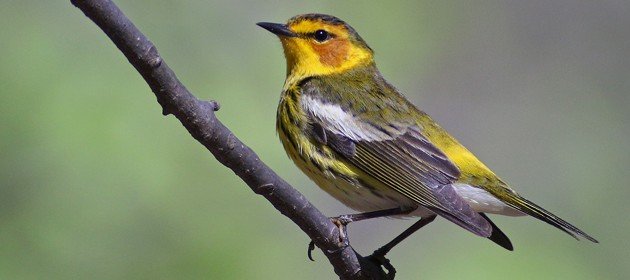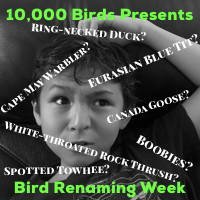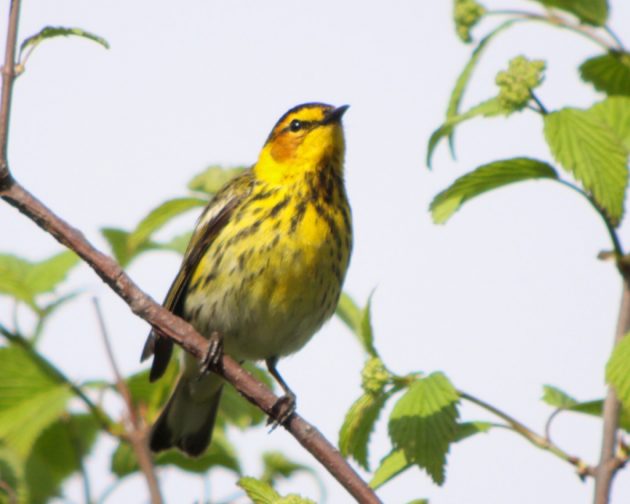
The Cape May Warbler is a boldly patterned, voracious predator. Primarily yellow below, with black racing stripes, it prowls through the canopy laying waste to caterpillars. A thrill to see, especially to see well, the Cape May Warbler is most commonly spotted as a passage migrant or as a winter resident, considering that its breeding area is the spruce-fir forests of Canada and some of the northernmost parts of the United States. There are many more people to see Cape May Warblers on migration through the eastern half of the United States or in winter in the Caribbean. One place that is not particularly known for sightings of the Cape May Warbler is Cape May, New Jersey, where Alexander Wilson first described the bird. After his description the species was not spotted in Cape May for one hundred years, though this was likely due to a lack of effort and reporting because the bird is an uncommon but regular visitor there.
But why allow the location where the bird was first described be forever memorialized in the name of such a charismatic species? “Cape May” surely has enough of a connection to birding that not having a species named for it won’t harm the birding-industrial complex that has built up in New Jersey’s southern-most point. Between the Cape May Bird Observatory, the World Series of Birding, an annual spring birding festival, an annual fall birding festival, and, you know, great birding sites at a classic east coast migrant trap, there is no fear that Cape May will be forgotten by the birding world. If anything, the birders associated with Cape May won’t let us forget for a minute about Cape May. Go ahead, ask a Cape May birder about birding in Cape May. I dare you. (They’re at least as bad as northern Ohioans.)
On the other hand, the species in question has a scientific name – Setophaga tigrina, roughly, Tiger Warbler – that perfectly captures its appearance and attitude. It is the common name in Spanish (Reinita Tigrina), French (Paruline tigrée), and German (Tigerwaldsänger). It is memorable, applicable, and sensible. So let’s get with the rest of the world and change a name that makes no sense on any level to one that makes sense on every level. Tiger warbler. Tiger Warbler. TIGER WARBLER!!!
ROAR!
…..
 Most birds were named by now dead white men who didn’t appreciate that most of the species they were “discovering” had already been discovered and had names. Most of the birds so named were named by men with the dead remnants of a bird in their hand and often the men doing the naming had never seen the bird in life. Geographic, honorific, horrific, and overly specific names abound much to the detriment of those who would like names to actually fit the creatures being described. And we poor birders have to use those names because otherwise no one will know what bird we are checking off our list and bragging about having spotted to fellow birders, bored families, and unimpressed romantic interests. Well, no more! We here at 10,000 Birds have decided to right some wrongs and improve the birding world by renaming birds the way they should have been named from Linnaeus to the present. (Or, at least, pointing out some names that suck.) Welcome to Bird Renaming Week, our week-long exploration of the names we put to birds and how they can be improved!
Most birds were named by now dead white men who didn’t appreciate that most of the species they were “discovering” had already been discovered and had names. Most of the birds so named were named by men with the dead remnants of a bird in their hand and often the men doing the naming had never seen the bird in life. Geographic, honorific, horrific, and overly specific names abound much to the detriment of those who would like names to actually fit the creatures being described. And we poor birders have to use those names because otherwise no one will know what bird we are checking off our list and bragging about having spotted to fellow birders, bored families, and unimpressed romantic interests. Well, no more! We here at 10,000 Birds have decided to right some wrongs and improve the birding world by renaming birds the way they should have been named from Linnaeus to the present. (Or, at least, pointing out some names that suck.) Welcome to Bird Renaming Week, our week-long exploration of the names we put to birds and how they can be improved!
…..














Leave a Comment